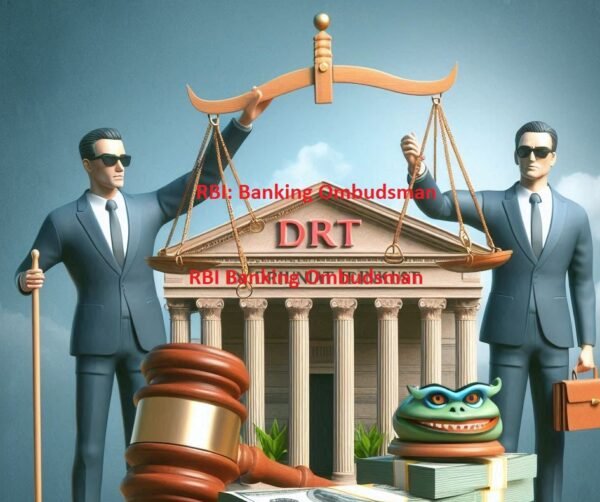Where to Complaint for Fake Bank Loans in the name of Borrower

In India, you can complain about fake bank loans in your name through these channels:
Banking Ombudsman:
Lodge a complaint with the Reserve Bank of India Ombudsman (RBIO) online at https://cms.rbi.org.in.
Alternatively, send a written complaint by post to: Centralized Receipt and Processing Centre (CRPC) Reserve Bank of India, 4th Floor, Sector 17, Chandigarh 160017
Call the toll-free number: 14448
Cyber Crime Cell:
File a written complaint with the cyber crime cell, either online at https://cybercrime.gov.in or offline at your nearest police station.
You can also call the dedicated cybercrime hotline number: 155260 (9:00 AM to 6:00 PM on business days)
National Consumer Helpline:
File a complaint online at https://consumerhelpline.gov.in or call the toll-free number: 1800-11-4000
Concerned Bank:
Contact the customer care department of the bank involved in the fake loan and file a written complaint with them.
Police Station:
File a First Information Report (FIR) at your nearest police station.
When filing a complaint, make sure to include all relevant details such as the loan amount, loan account number (if available), bank details, and any evidence you may have.
It is important to act quickly and report the fake loan as soon as you become aware of it. The sooner you report it, the better the chances of getting the issue resolved.
If someone has taken a fake bank loan in your name (identity theft or fraud), you should immediately take action to protect yourself and report the fraud. Here’s what you need to do:
1. Report to the Bank
Visit the bank where the loan was taken and inform them about the fraudulent loan.
Submit a written complaint along with proof of your identity.
Request them to investigate and provide details of the loan.
2. File a Police Complaint (FIR)
Go to your nearest police station and file an FIR for financial fraud or identity theft.
Provide all necessary documents, such as bank statements, loan documents (if available), and any communication related to the fraudulent loan.
3. Report to the Reserve Bank of India (RBI) (For India)
You can lodge a complaint with the Banking Ombudsman through RBI’s Complaint Management System (CMS): https://cms.rbi.org.in
4. Contact Cyber Crime Cell
File a complaint on the National Cyber Crime Reporting Portal: https://cybercrime.gov.in (For India).
You can also visit the local Cyber Crime Police station.
5. Inform Credit Bureaus (CIBIL, Experian, etc.)
Contact credit rating agencies like CIBIL, Experian, Equifax, or CRIF High Mark and report the fraudulent loan.
Request a correction or dispute in your credit report.
6. Report to Consumer Helpline (For India)
Call National Consumer Helpline at 1800-11-4000 or visit https://consumerhelpline.gov.in
How to Report Fake Bank Loans in Your Name
If you discover a fraudulent loan taken in your name, take the following steps to address the issue effectively:
1. Check Your Credit Report
Regularly review your credit report for unauthorized loans or discrepancies. You can access your credit report through agencies like CIBIL. If you find inaccuracies, log into ‘myCIBIL’ and use the ‘Dispute Center’ to file a complaint.
2. Inform Your Bank Immediately
Notify your bank as soon as possible. They may be able to freeze transactions related to the fraudulent loan and provide guidance on further actions.
3. Report to Cyber Crime Authorities
File a complaint online via the National Cyber Crime Reporting Portal or call the national cybercrime helpline at 155260 for assistance.
4. Escalate to the Banking Ombudsman
If your bank does not resolve the issue satisfactorily, you can file a complaint with the Banking Ombudsman of the Reserve Bank of India (RBI). This can be done online by submitting a complaint with details of the fraudulent activity.
5. Keep Records of All Communications
Document all evidence related to the fraud, including:
Screenshots
Transaction details
Emails and correspondence with banks or lenders
These records will be crucial when filing complaints.
6. Seek Help from Consumer Protection Agencies
If your issue remains unresolved, consider escalating your complaint through consumer courts or local cybercrime units.
7. Take Preventive Measures
To protect yourself from future fraud, consider CIFAS Protective Registration, which adds extra security and makes it harder for loans to be issued in your name without consent.
By following these steps, you can effectively report and mitigate fraudulent loans, safeguarding your financial identity and credit history.
What are the Duties of DRT in Fake Bank Loans in the name of Borrowers
The Debts Recovery Tribunal (DRT) in India plays a crucial role in addressing issues related to fake bank loans in the name of borrowers. Here are some of the key duties and functions of the DRT in such cases:
Adjudication of Disputes: The DRT has the authority to adjudicate disputes related to fake bank loans where borrowers are wrongly implicated. It examines the evidence presented by both parties, including loan documents, financial records, and witness testimonies, to determine the authenticity of the loan and the borrower’s involvement.
Protection of Borrowers’ Rights: The DRT acts as a safeguard for borrowers against fraudulent activities. It ensures that borrowers are not unfairly targeted or held liable for loans they never applied for or received. The DRT can pass orders to protect the rights of borrowers and prevent banks or financial institutions from taking coercive actions against them.
Investigation of Fraudulent Activities: In cases of fake bank loans, the DRT may initiate investigations to uncover the fraudulent activities involved. It can summon witnesses, demand the production of documents, and examine financial records to identify the perpetrators and bring them to justice.
Recovery of Dues: If the DRT determines that a loan is indeed fraudulent and the borrower is not liable, it can order the bank or financial institution to rectify the records and release the borrower from any obligations related to the loan. The DRT may also direct the bank to take appropriate action against the individuals involved in the fraudulent activity.
Imposition of Penalties: The DRT has the power to impose penalties on banks or financial institutions found guilty of engaging in fraudulent lending practices or wrongfully implicating borrowers in fake loan cases. These penalties can include fines, restrictions on business activities, and other punitive measures.
Providing Relief to Borrowers: The DRT can provide various forms of relief to borrowers who are victims of fake bank loans. This may include waiving off loan obligations, restoring their credit scores, and providing compensation for any financial losses or damages suffered due to the fraudulent activity.
Ensuring Transparency and Accountability: The DRT promotes transparency and accountability in lending practices by holding banks and financial institutions responsible for their actions. It ensures that borrowers are treated fairly and that their rights are protected in loan-related matters.
The DRT plays a vital role in addressing the issue of fake bank loans in India. It acts as an independent and impartial body to adjudicate disputes, protect borrowers’ rights, investigate fraudulent activities, and ensure that justice is served in such cases.
The Debt Recovery Tribunal (DRT) plays a crucial role in handling cases related to fake bank loans issued in the name of borrowers without their knowledge. The DRT operates under the Recovery of Debts and Bankruptcy Act, 1993 (RDB Act) and the Securitisation and Reconstruction of Financial Assets and Enforcement of Security Interest Act, 2002 (SARFAESI Act). Here’s how the DRT is involved in such cases:
Duties of DRT in Cases of Fake Bank Loans:
Hearing Borrower Complaints
If a borrower discovers a fake loan in their name, they can approach the DRT to dispute the claim made by the bank or financial institution.
DRT must hear the borrower’s plea and review the evidence to determine the authenticity of the loan.
Scrutiny of Loan Documents
DRT examines whether the loan documents were genuinely executed by the borrower.
If fraud or forgery is suspected, the tribunal can direct forensic examination of signatures and documents.
Investigating Bank’s Due Diligence
DRT can check whether the bank followed proper procedures, such as Know Your Customer (KYC) norms and loan approval checks.
If the bank is found negligent, DRT can hold the institution accountable.
Stay on Recovery Proceedings
If a fake loan is established, DRT can stay or cancel the recovery proceedings initiated by the bank.
This protects the innocent borrower from wrongful legal action.
Imposing Penalties on Fraudulent Banks or Officials
If collusion or fraud by bank officials is proven, DRT can recommend penalties, disciplinary action, or prosecution.
The tribunal may direct banks to compensate the affected borrower for wrongful actions.
Directing CBI or Police Investigation
If large-scale fraud is suspected, DRT can order further investigation by law enforcement agencies like the Central Bureau of Investigation (CBI) or Economic Offenses Wing (EOW).
Compensating the Victim
If a borrower suffers financial loss due to a fake loan, DRT can direct the bank to compensate them for damages.
Cancellation of Fraudulent Loans
Upon proof of fraud, DRT can direct the bank to cancel the fraudulent loan account and remove the borrower’s liability.
Ensuring Compliance with RBI and Banking Norms
DRT can review whether banks complied with Reserve Bank of India (RBI) guidelines while granting the loan.
If violations are found, it may recommend further action by RBI or regulatory bodies.
The Debt Recovery Tribunal (DRT) plays a crucial role in protecting innocent borrowers from fraudulent loans by ensuring fair investigations, preventing wrongful recoveries, and holding banks accountable. If someone finds a fake loan in their name, they should immediately file a case with the DRT along with necessary documents and evidence.
Tackling Loan Frauds:
Early Warning Signals: The Reserve Bank of India (RBI) has introduced the concept of a red-flag account, which displays early warning signals of fraud.
Fraud Monitoring: Banks are required to create fraud monitoring groups that report to the banks’ chief executives monthly.
Forensic Audits: Banks may seek forensic audits of specific loan accounts to check for fraud, particularly in cases involving non-performing assets (NPAs).
Staff Accountability: The RBI mandates that the board of banks fix accountability in fraud cases, especially if senior officers are involved.
|
||||||||||||||||||||||||||||||||||||||||||||||||||||||||||||||||||||||||||||||
